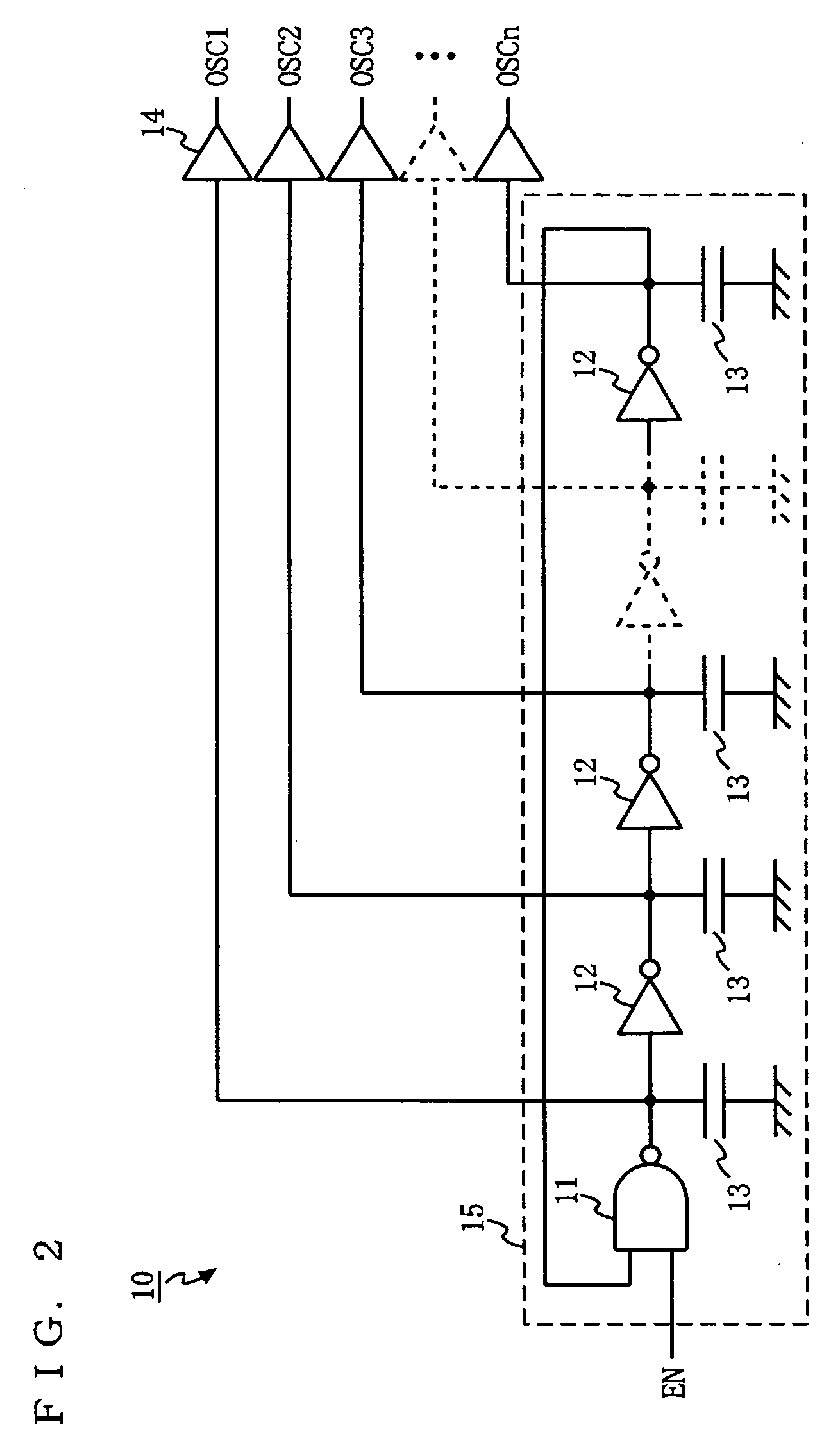Booster circuit
a booster circuit and circuit technology, applied in the field of booster circuits, can solve the problems of deteriorating current supply capability affecting the operation of the pump circuit, and the problem of b>69/b> might encounter a problem, so as to reduce the circuit size of the booster circuit, suppress the amount of boosted voltage, and increase the frequency of the oscillation clock
- Summary
- Abstract
- Description
- Claims
- Application Information
AI Technical Summary
Benefits of technology
Problems solved by technology
Method used
Image
Examples
Embodiment Construction
[0068]FIG. 1 is a block diagram illustrating a configuration of a booster circuit according to an embodiment of the present invention. The booster circuit includes an oscillation circuit 10; a plurality of four-phase clock generation circuit 20; a four-phase clock delay circuit 30; a first booster block 41; a second booster block 42; and a boost-assist circuit 80. The first booster block 41 includes four-phase clock transfer control circuits 50 equal in number to the four-phase clock generation circuits 20, pump circuits 60 equal in number to the four-phase clock transfer control circuits 50, and a detection circuit 70. The second booster block 42 is configured in a manner similar to the first booster block 41. The first booster block 41 generates a voltage Pout1 higher than a power supply voltage, and the second booster block 42 generates a voltage Pout2 higher than the voltage Pout1.
[0069]The booster circuit shown in FIG. 1 has the following major features. Specifically, the four-...
PUM
 Login to View More
Login to View More Abstract
Description
Claims
Application Information
 Login to View More
Login to View More - R&D
- Intellectual Property
- Life Sciences
- Materials
- Tech Scout
- Unparalleled Data Quality
- Higher Quality Content
- 60% Fewer Hallucinations
Browse by: Latest US Patents, China's latest patents, Technical Efficacy Thesaurus, Application Domain, Technology Topic, Popular Technical Reports.
© 2025 PatSnap. All rights reserved.Legal|Privacy policy|Modern Slavery Act Transparency Statement|Sitemap|About US| Contact US: help@patsnap.com



